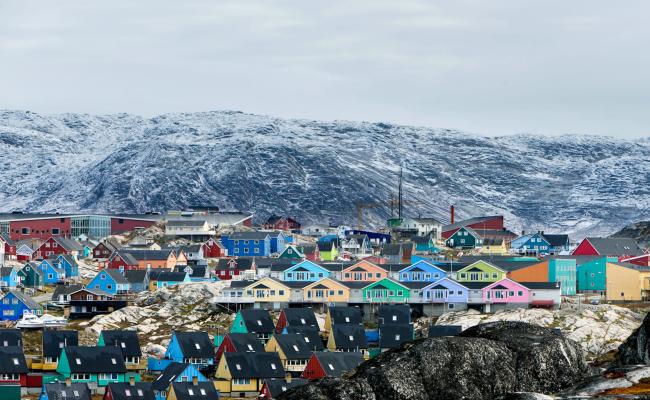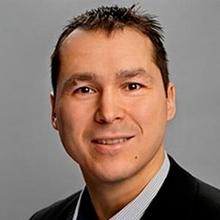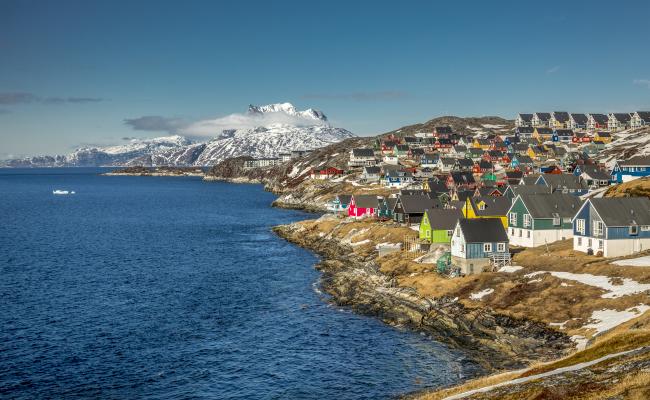Greenland’s Royal Arctic Line in Murky Waters
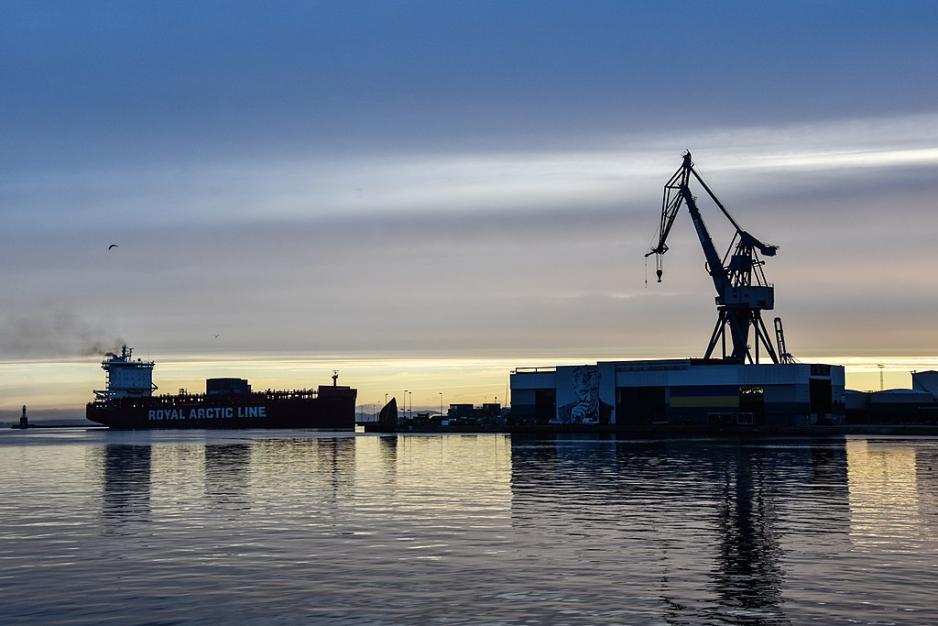
Tukuma Artica arriving in Aarhus Havn in 2020. (Photo: Thomas Dahlstrøm Nielsen, CC BY-SA 4.0 via Wikimedia Commons)
Eight years of controversial reforms within Greenland’s publicly owned shipping agency have hit a rock: The CEO is gone and an official probe into the company’s affairs has been called.
The operation was designed to loosen Greenland’s ties to Denmark, the old colonial power. The idea was to lessen the linkage and better equip Greenland to trade freely, buy and sell on the world market without everything having to go through Denmark.
The key to change was a deep restructuring of Royal Arctic Line (RAL), Greenland’s publicly owned shipping agency and Greenland’s most important lifeline to the outside world.
For years the reforms to RAL’s organization were backed by Greenland’s political leaders, but in September RAL’s Board of Directors abruptly announced the exit “through an accord” of the company’s Chief Executive Officer, Verner Hammeken, the main executor of change.
On December 11, a demand for a full probe into the company’s affairs was made in public by Múte B. Egede, Head of Naalakkersuisut, Greenland’s government.
What has happened? How did it all get to this?
At the core of the Royal Arctic Line controversy lie political ambitions to strengthen Greenland’s economy
To look for answers, we sailed from Denmark to Greenland, seven days in the North Atlantic, on one of Royal Arctic Lines heavily loaded container ships.
Not for the faint of heart
We depart in the dark at three AM from the harbor in Århus, Denmark. Throughout the evening the harbor has been sharply lit while massive cranes have swung some 800 steel containers on board. Many bound for Iceland, the rest for Greenland with fruits and furniture, books and building materials, cigarettes, vegetables and vehicles.
All that the 59.000 Greenlanders need for their daily lives.
We have cabins on the A-deck, fifth floor on Tukuma Arctica, a 178 meter long container ship built in China and in service in Greenland since 2020.
Royal Arctic Line, also known as RAL, handles by far the majority of Greenland’s supplies as well as exports and we now know that the shipping of containers in the Arctic is not for the fainthearted.
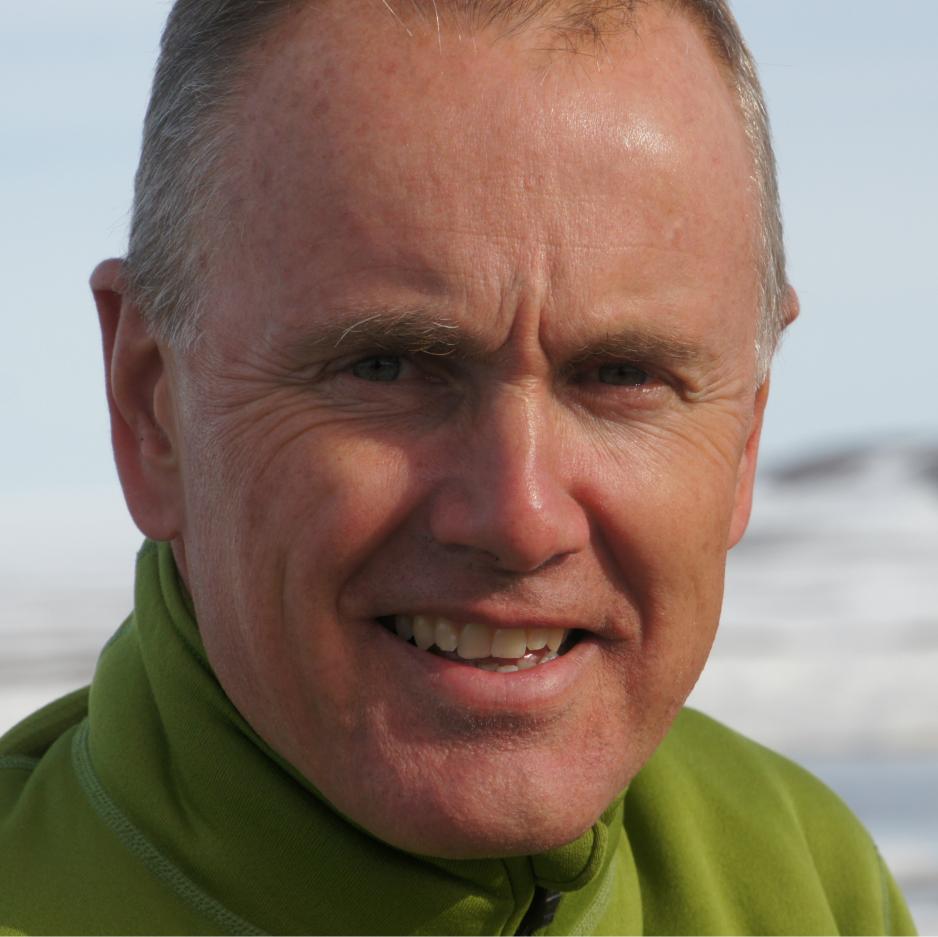
Martin Breum is a danish journalist and author with focus on Greenland.
After 35 hours at sea we have put Denmark and Norway behind us. A crew member shows us the heavy steel roof over the windlass in Tukuma Arctica’s stern. Last year, the roof caved in as if made of rubber when a freak wave crashed onto the ship.
On a late afternoon we plow the waters south of the Shetland Islands shadowed by fulmars and northern gannets. Soon, we will dock in Torshavn, the capital of the Faroe Islands.
At the core of the RAL controversy lie political ambitions to strengthen Greenland’s economy and its options for a renewal of relations with Denmark or even independence at some point in the future.
Denmark still holds sovereignty over Greenland, and Naallakersuisut, Greenland’s semi-autonomous government, counts on grants from Denmark to cover some 52 percent of its expenditures – a dependency most Greenlanders would like to do without.
A reformed Royal Arctic Line was to provide access to new, cheaper and better supplies for Greenland and new and more profitable markets for Greenlandic fish and cold water shrimps, which account for some 96 percent of its export revenues.
Also read (the text continues)
For long, the reforms enjoyed solid support from Greenland’s political leaders:
“Despite the heavy criticism we have had enormous political backing. It has been of great support,” Verner Hammeken, the now former CEO, told me shortly before my voyage.
The King’s monopoly
For 300 years, trade in Greenland has had Denmark as its point of departure. At first, the Danes brought flour, tobacco and rifles and took furs, skins and oil from melted seal blubber on their journey back.
The King of Denmark enforced a monopoly on trade. In 1739, Danish war ships even fought a brief battle against Dutch traders who bartered with the Greenlanders. Greenland remained closed to trade for other nations until 1950 and part of the monopoly is still alive, only now under Greenlandic control.
Inspired by Iceland
In 1993, Royal Arctic Line, publicly owned, inherited the monopoly on container traffic to Greenland and ideas began to float among Greenland’s politicians on how to remodel the company and diversify Greenland’s commerce to a world beyond Denmark.
In Greenland, change took speed in 2015
“It was many years ago, we began to talk about the opening of alternative trading routes. This is not Verner Hammeken’s invention,” a former politician in Nuuk told me.
Inspiration was found in Iceland. In 1914, the establishment of Eimskip, a shipping company with thousands of Icelanders as shareholders, was pivotal to Iceland’s secession from Denmark in 1917.
The Icelandic people believed that their political freedom would be empty unless they were able to trade with other than the Danes.
In Greenland, change took speed in 2015. Aleqa Hammond, head of the Siumut party and known for her cry for enthusiastic support for Greenland’s independence, had just been replaced as head of Greenland’s government by Kim Kielsen, a political associate. There was talk of large oil-finds in Greenland; change was in the air.
A local business man, Kuno Fencker, known for his support of Greenland’s moves toward increased independence, was installed as chairman of RAL’s Board of Directors. Hammeken, 49 at the time, was appointed Chief Executive Officer of RAL - the first Greenlander to occupy the post.
Coming home to Greenland
For decades, Hammeken had not spent much time in Greenland, but he now initiated a rapid reorientation of RAL.
He was born in Greenland but at an early age he moved to Denmark with his mother, grew up, took jobs on fishing vessels, got a business degree and finally joined A. P. Møller Maersk, a Danish shipping agency, one of the biggest in the world with state-of-the-art containerships traversing the world.
Not for the profit
In 2015, as managing director of RAL, Verner Hammeken was to create new opportunities for Greenland’s imports and exports.
“This was part of the job in 2015. At that stage, the predominant view in Greenland was more opportunity-driven,” Hammeken recalls.
He set out to run RAL for the benefit of Greenland, not with a narrow aim at large corporate profits.
Also read (the text continues)
“I’m not afraid to call it a vocation or a calling. Not a religion, but a vocation, because I believe in it. At first, there was our group of managers, which was obviously non-Greenlandic. This has changed now,” he said in 2021.
A number of Danish managers disappeared and new Greenlandic managers came on board. Hammeken canceled RAL’s membership of Greenland’s Business Association and publicly described the upper crust of Greenland’s business community, which still counts many Danes, as “an oil-layer on society”.
He sold off subsidiaries in Denmark, moved RAL’s headquarters from Denmark to Nuuk, and shifted the handling of containers from the city of Aalborg to Århus, another Danish city with a larger port and better integration with global container traffic.
Eimskip alliance
We dock in Torshavn in the Faroe Islands in the dead of the night and see traces of Hamnmeken’s reforms. We have been at sea for some 45 hours. Torshavn is fast asleep, but the harbor rumbles under heavy lights. From the bridge some 35 meters above sea we see men in helmets race to get Tukuma Arctica ready to move on. Speed is everything.
In Nuuk, smaller ships from Royal Arctic Line are waiting to bring supplies to Greenland’s dozens of coastal communities. If we are late there will be trouble, complaints and loss of money.
Verner Hammeken and his allies enjoyed the support of the Royal Arctic Line’s political owners
In 2020, Verner Hammeken forged an alliance with Eimskip which sails every week to Portland in the US, to Norway, Sweden, The Faroe Islands, Denmark and Germany and Verner Hammeken saw new opportunities for Greenland’s commercial life.
Today, Tukuma Arctica works in tandem with Eimskip’s ships shifting containers in the North Atlantic. Hammeken believes this allows for more efficient utilization of RAL’s ships.
Deep into the night Tukuma Arctica continues onwards and into a magic daybreak. On our port side a full moon breathes silver on rocky contours. On our starboard side the sun rises from a golden horizon.
Heavy headwinds
For years, Verner Hammeken and his allies enjoyed the support of RAL’s political owners, the government of Greenland, but the criticism from Greenland’s business community was consistent and severe.
Opposition from Polar Seafood, the largest private employer in Greenland and a crucial contributor to Greenland’s economy, was particularly fierce.
Like other fishing companies in Greenland, Polar Seafood depends on Royal Arctic Line for the transport of its fish and shrimp to cold-storage warehouses in Denmark. Basically all fish and shrimps caught in Greenland are shipped to Denmark before the catch is moved onward to consumers abroad.
For decades, this system of export has centered on the harbor in Aalborg in the north of Denmark. The fishing companies have built their infrastructure there, but since Verner Hammeken terminated Aalborg as RAL’s main hub in Denmark they must collect their catch several hours away in Århus.
The companies also claim that the co-sailing with Eimskip leads to shipping schedules more designed to meet Icelandic needs than Greenlandic.
“I have to admit that my patience is about to reach a limit. I have to conclude that we will get nowhere,” Polar Seafood’s CEO, Henrik Leth wrote to Hammeken already in 2018.
Five years later, this summer, the director of Greenland’s Business Association, Christian Kjeldsen, coined his conclusion:
Also read (the text continues)
“The changes were based on an assumption that everything would be better and cheaper, but unfortunately the opposite is happening.”
Hammeken listened, but did not slow down. Like others in Greenland, he believes the country would be better off if its fish and shrimp were stored in warehouses in Greenland, not in Denmark, but neither moving RAL’s activity from one city to the other in Denmark, nor any of his other reforms have led to the intended changes.
The fishing companies accuse Hammeken of faulty analysis of their industry. Greenland’s retailers show only moderate interest in goods from other countries than Denmark and many of them accuse RAL of far too frequent price hikes. Hammeken, however, has his own ideas.
“I am not saying that the business community in Greenland is all Danish, but a large part of it is based on Danish interests, in particular in construction and the fishing industry. I think it would be beneficial to Greenland with a more diverse business community connected not only to Denmark,” he told me.
He firmly denies that he has ignored the needs of RAL’s customers.
Verner Hammeken connected the Royal Arctic Line to the larger Icelandic logistics
“There is nothing as satisfying as doing what the customer asks for. But in RAL’s case, the customer is the people of Greenland, not the shops and the companies between us and the customer,” he says.
Local praise
Tukuma Arctica crosses the Irminger Strait between the Faroe Islands and Iceland without meeting a single ship.
In Reykjavik we offload containers and take new on board for Nuuk. The cranes wear Eimskip’s logo. Verner Hammeken connected RAL to the larger Icelandic logistics and has never made a secret of his motives.
In 2021, in his spare time in Nuuk, he and a group of like minded locals formed Inuit Nutaat, New People, a private association. On Facebook they listed what they deemed were 30 Danish wrongdoings in Greenland, including what they described as a deliberate Danish process of assimilation through the mixing of Danish and Greenlandic genes in Greenland.
This could lead, the group claimed, to “actual ethnic cleansing” of the Inuit people in Greenland.
"Everyone is welcome to our beautiful country if you respect and listen to us", says Prime Minister of Greenland, Mute B. Egede from the opening session at the Arctic Circle Assembly 2022. (Photo: Trine Jonassen)
“We must create a system that is not copied from Denmark and replace the view of people here as subhuman,” Verner Hammeken told me in 2021.
As the CEO of RAL he won favor with the many in Greenland who would like to see more Greenlanders in positions of leadership. As Esekias Therkelsen, a fisheries candidate from North Greenland, told me:
“The re-orientation of RAL is beneficial for Greenland. It is part of the ongoing Greenlandization of our country and the dismantling of old state structures. We have a richer experience now of how to move things from Denmark to Greenland. Many people are glad that one of our own occupies a top position. This is progress we can be proud of.”
The end
At two AM Tukuma Arctica leaves Reykjavik and enters the Denmark Strait for the long haul from Iceland to East Greenland.
The photographer spots a powerful column of misty breath from a whale. On the radar we follow Dettifoss, one of Eimskip’s vessels, bound for Denmark through the partnership with RAL.
Also read (the text contiues)
A few hours before Cape Farewell, Greenland’s southern tip, the weather goes foul. The wind grows to hurricane strength and for many hours Tukuma Arctica rolls and dives through six to seven meter waves. Rain drenches the ship. Loose items not secured rips along the sole of the ship, but the crew hardly notices. Meals are served on time.
Tough weather at Cape Farewell is standard for all seasons.
In January this year, Verner Hammekn hiked without warning the price of cold storage containers from Nuuk to Denmark by 32 percent, and once again Greenland’s fishing industry smarted.
RAL’s deficit for 2022 amounted to some 14 million USD before tax, and the company’s dialogue with the business community was impossibly strained.
At a somber annual assembly in Nuuk in July, RAL’s political owners, represented by the chairman of Naalakkersuisut, Greenland’s government, Múte B. Egede, and Minister for Infrastructure Erik Jensen, voiced their distinct dissatisfaction.
We find that the shipping agency has to improve in this field
Múte B. Egede called for a much more stringent focus on profits and for a “constructive and reciprocal dialogue with the business community”.
“In our new ownership strategy we emphasize strongly that our companies have a societal responsibility and that they must cooperate well with the business community and with the public they serve. We find that the shipping agency has to improve in this field,” he told Sermitsiaq, the local paper.
But Verner Hammeken did not waver. In July, he launched his so far most ambitious plan:
“I saw it as the culmination of my efforts of the previous eight years,” he told me.
Come 2024, the schedule of Tukuma Arctica was to expand with weekly stops in Great Britain and Bremerhaven, Germany. Soon after, however, it was clear that his RAL journey was up.
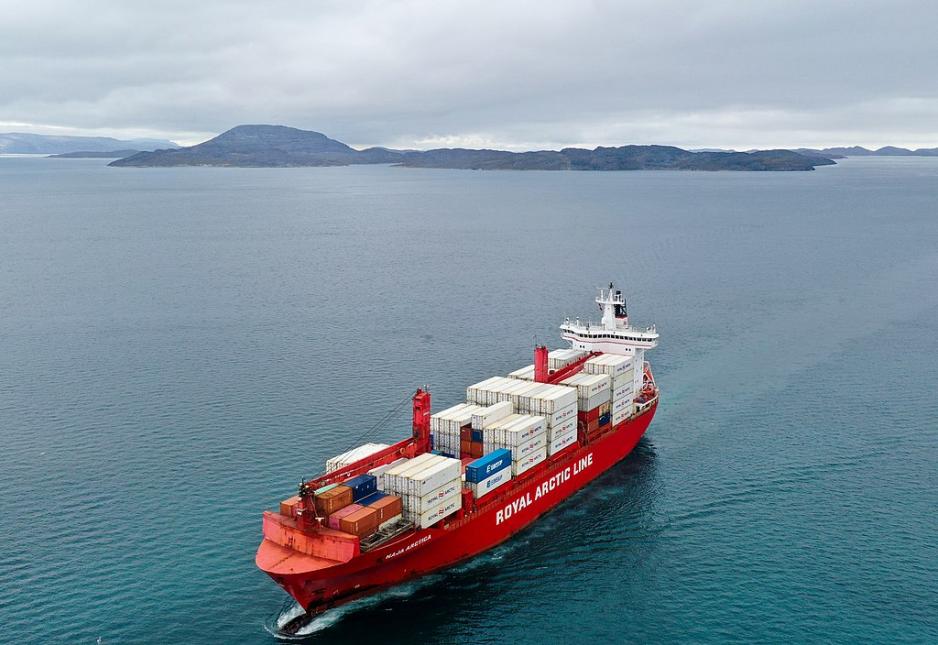
Naja Arctica near Nuuk, Greenland. (Photo: Quintin Soloviev, CC BY-SA 4.0 via Wikimedia Commons)
In September, RAL’s Board of Directors announced that an agreement had been reached with Hammekan that he would step down as CEO with immediate effect. They acknowledged his involvement in RAL’s fleet renewal, in the move of leadership from Denmark to Nuuk, the co-sailing with Eimskip and “significant renewal of systems and organization”.
But the key message was clear:
“There is now a need for renewed leadership competencies.”
Hammeken’s critics maintain that he was allowed for far too long to engage in politics rather than in sound business practices; an accusation that he firmly denies.
“The politicians have been under heavy pressure. I am proud of the changes and the long-term opportunities for Greenland that we have created. I am certain that people will realize what they represent in a few years,” he says.
After seven days at sea Tukuma Arctica docs in Nuuk. We have covered 2399 nautical miles. Royal Arctic Line’s new leadership has announced that in 2024 Tukuma Arctica’s weekly schedule will include a stop in Bremerhaven, Germany, just as Hammeken has proposed.
From the pier we have a view of RAL’s corporate headquarters; no one believes that RAL will move back to Denmark. Some of his reforms have obviously settled, but Hammeken is no longer part of RAL; the operation has been called off and Denmark is still Tukuma Arctica’s main destination.


